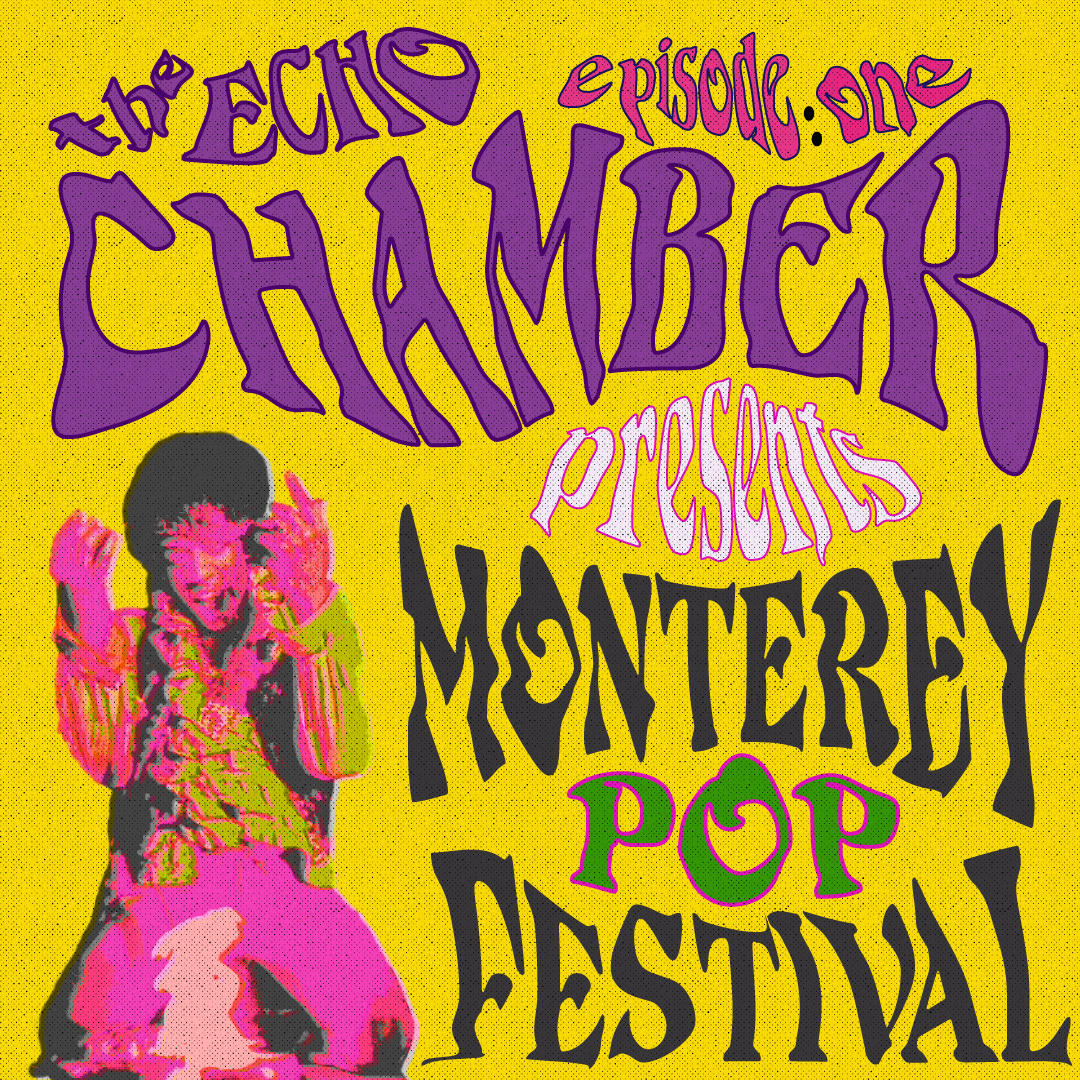
Long before there was Coachella, Outside Lands Festival, and the popular music gatherings of today, the Monterey Pop Festival was the first of its kind. Taking place in the fairgrounds of Monterey in the summer of 1967, the three-day festival brought to the stage the likes of Jimi Hendrix, Janis Joplin, and The Who. Their performances are now viewed as legendary markers in the history of rock and roll, but at the time, Jimi and Janis were newcomers to the rock scene. These debut appearances introduced them to the rest of the world and in doing so, they helped revolutionized the entire landscape of rock and roll music to come.
In this episode, Darice Murray-McKay, Jonathan King, and Rosalie Howarth recount their experiences as young teenagers attending the legendary music festival. Additional commentary is provided by famed music critic Joel Selvin.

Monterey Pop Festival Revisited
Joel Selvin: Monterey – it was a watershed moment where everything pivoted in three days. All of what pop music was on Friday was changed by Sunday night. All the groups that came in on top – The Association, Johnny Rivers, the Mamas & Papas – they were history on Monday. And everybody that came in unknown from London and San Francisco, they were the new stars. The ones the record companies wanted. That is what people wanted to hear. It was this huge swivel spot. The entire sound of popular music had changed in just that weekend. Nothing was ever the same since.
HOST: Welcome to The Echo Chamber, I’m your host Brandi Howell. It almost seems mythical now, what we hear about the Summer of 1967, of the music festival that took over the sleepy fairgrounds of Monterey, CA for those three days in June. The idea seems so commonplace now with the Coachella’s and Outside Lands of our day, but this was the first of its kind. An idea hatched up by John Phillips of the Mamas & Papas and their producer Lou Adler. Little did they know that their experiment would prove to be an unforgettable experience ushering in a new era of rock and roll for generations to come. My friend’s father was in the crowd that weekend and at the young age of 17, he said it changed his life. A strong statement of course, but no doubt it’s true. To have witnessed firsthand these moments that are now permanently etched in the lexicon of rock and roll, the memories and music still hold their strength and power for him and the others that were there. And so as we marked upon the 50th anniversary of Monterey Pop Festival, I began to talk to some of the others that were also there in the crowd. To listen to their stories and share their experiences of those three days in Monterey. And now on The Echo Chamber, we go back to Monterey Pop Festival. Here are their stories.

Darice Murray-McKay (DMM): My name is Darice Murray-McKay. We are in the San Francisco Public Library branch in the Haight and I have been working here since 2003. When I was five years old, my mother woke me up, grabbed me out of bed and put me in front of the black and white television set and said – Watch this! This is important. It was Elvis on the Steve Allen show. I was doomed. It’s almost hardwired DNA now, everything that was rock and roll. It was 1967, I was living in San Diego, CA. I was 16 years old. When the Monterey Pop Festival was announced, my best friend in high school and myself got tickets.
JK: I’m Jonathan King. I had just turned 17 when I went to the Monterey Pop Festival. I was a Los Angeles high school student just finishing the 11th grade. A rock and roll nut, but a loner, socially maladroit. I spent endless hours in my room worshipping rock and roll records. I was probably the only kid in my entire high school who had a subscription to Billboard so I could follow disc jockeys and charts and record releases. I really obsessed about it. So when the festival was announced, I said – I gotta go to this thing!
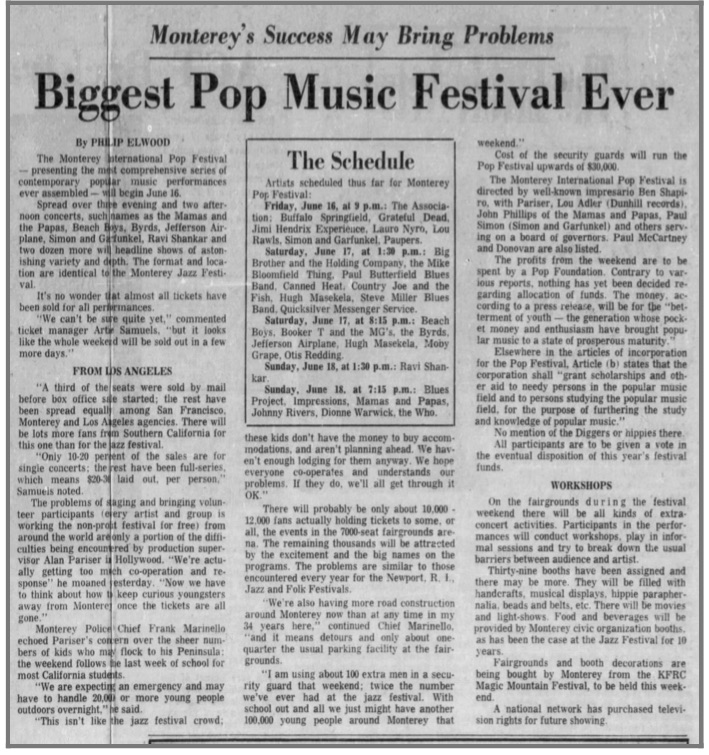
There were a couple of small problems. I had never been out of Los Angeles. I was 17 years old and had never been beyond the city limits. Extremely shy. Had no adult skills at all, so the notion of somehow transporting myself 300 miles to northern California, this mystical Oz, almost was beyond me. But I was bound and determined.
Rosalie Howarth (RH): When we got the word that this big rock festival was coming to the fairgrounds, that was really exciting news and we were all going to be there. We were going to meet all the people who were where it’s at. It was going to be totally out of site, like a be-in. I’m Rosalie Howarth and I’ve lived in Walnut Creek for 23 years, but I grew up in Monterey. I work for KFOG radio doing a show on Sundays called Acoustic Sunrise. When the time arrived, my girlfriend and I certainly couldn’t afford the $3 tickets, so we snuck into the fairgrounds and wondered around and found a place where we could see the stage if we climbed up the back of one of the horse corrals.
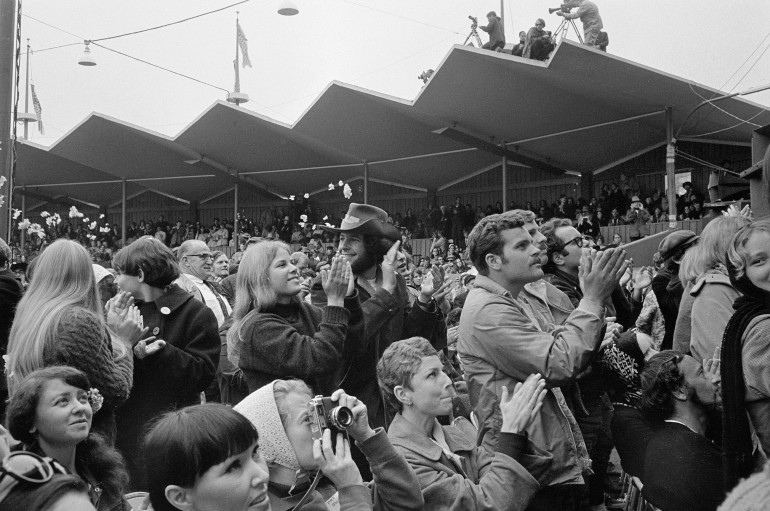
DMM: We told my parents that we were going to Monterey. My father said, “Oh, sure. We’ll drive you up.” They’d been our chauffeurs to shows before, to The Beatles, to the Yardbirds in Los Angeles. So they drove four teenage girls up to Monterey. We left very early in the morning on Thursday.
JK: My mother, way less determined. She first say, “No, are you insane?” Eventually I wore her down for the first time in my life by saying, “I’m going anyway!” She made me promise to get a hotel room and she made me promise to call every night. So a couple days before the festival, I started looking for a hotel room and what do you know, there was nothing in Monterey at all. I had no mental geography of the area so I pulled up a little map of California and noticed that Monterey was only a half of inch from some place called Santa Cruz. So I called and there was a hotel room. So my mom said, “Okay. Fine.”
DMM: It was interesting, four teenagers and two adults in a car. This was ’67 so we were driving a 1966 Caprice. We went up the coast, 12 hours – 15 hours straight. My father was a long distance truck driver so he doesn’t believe in overnights on trips. Drove up, spent Thursday night in the hotel.
JK: Got in the Greyhound bus on Friday morning, the first day of the festival and took a long ride out of Los Angeles for the first time in my life to mysterious places like Paso Robles and Salinas, my eyes were open wide. Got to Santa Cruz to claim my hotel room about 6pm, rushed to check in and get back to the Greyhound to take a bus to Monterey and see the Friday night show, but there were no buses. I was desolate! I was destroyed! The Animals were going to play that night and I had waited three years to see The Animals. They were one of my favorite bands. I wept copious tears. Finally, I went out to the freeway to try to hitch to Monterey. 17 years old, little Jewish boy from LA, this was all new and exciting. Could not get a ride for two hours. It was cold and miserable, so I trudged back to Santa Cruz in my hotel room and wept more copious tears and slept.
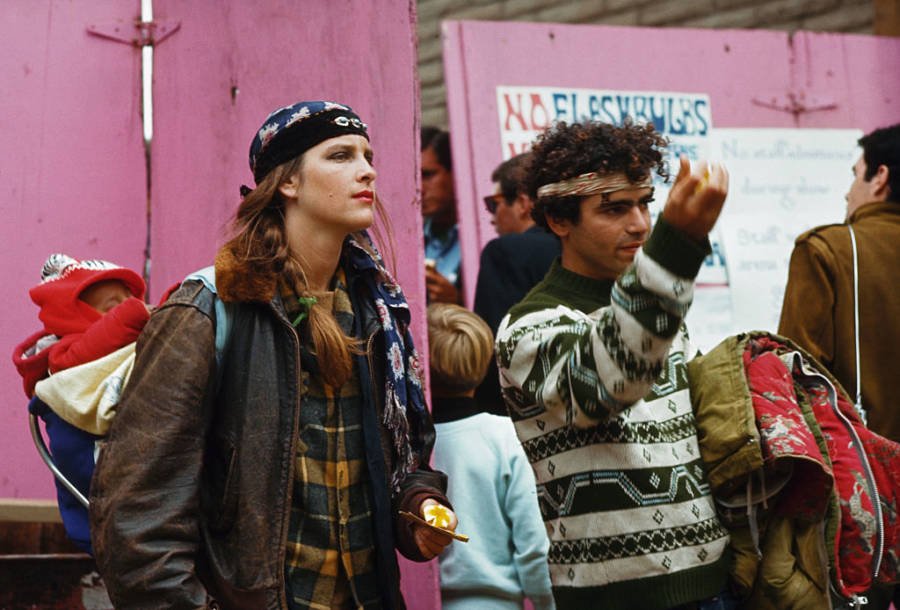
RH: The city just totally freaked out. There was an inundation of these long haired, red-eyed, young people with beards dragging their possessions along behind them. It must have looked like the zombie apocalypse to them.
DMM: Got dropped off to go to the concert Friday afternoon. We said we got to get their early. The first night we were way, way, way in the back. It was a large amount of people. Chairs were set up in the middle, and then there were the box seats. We were almost in the very, very last row at the back. The Friday night show went on into the dark. Eric Burden and The Animals, Johnny Rivers, Beverly, Lou Rawls, The Poppers, and The Association. It was just exciting.
And of course Simon and Garfunkel closed out the night. It was a highlight of the show, to hear them live, to hear that whole 15,000 people all humming along, all the way to the back row. It was very moving and it was a fitting ending.

DMM: The interesting part is what happened after we went Friday night. We got back to the hotel and I said, “Hey dad, mom – A lot of people are just staying at the fairgrounds. And they said – Yeah, see you Monday morning!” So four teenagers got up, went off to the show, and never came back ’til Monday afternoon. And they had no problem with that. None.
RH: I had parents who were of the school, as many were in those days, of benign neglect. Be home in time for dinner, that was the deal. So I told them where I was going and that I would be staying out late. I don’t remember how I got there. Everybody hitchhiked in those days, and I may have hitchhiked, though you know I didn’t tell my parents about it.

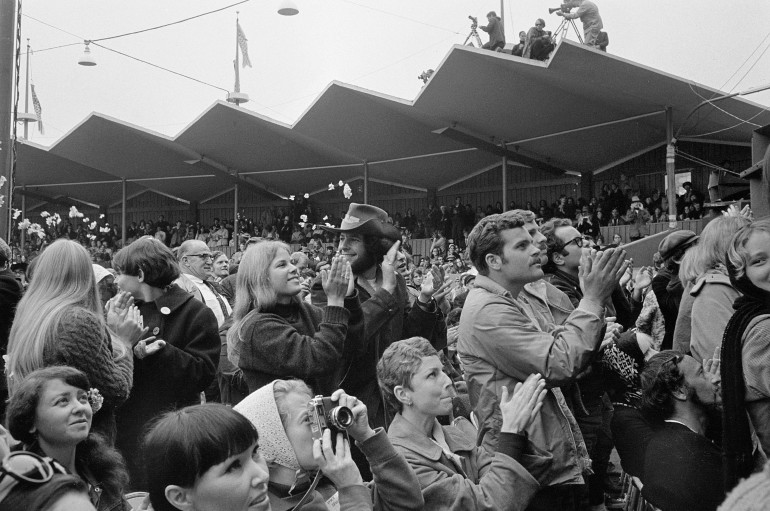
DMM: We were all feeling really high because we had just been turned loose from the hotel and we knew we were going to stay at the fairgrounds and it was just really exciting. My best memory of that day – I was looking across the floor and I saw this gorgeous, gorgeous guy. He had hair down to the middle of his back. Beautiful. And he was just staring at the stage entranced by what was going on. I’m just like, I am in love! My lord, look at that. And the next time I saw him he was on stage playing lead guitar for Quicksilver Messenger Service and it was John Cipollina. For me, what encompasses Monterey is seeing John across the field so much enjoying someone else playing, and then as I said the next time I saw him he was onstage playing and I was a diehard Cipollina fan forever.
It was a band with a few guys and this one woman singer. She is wearing a little knit dress with little tiny pumps – little, little tiny pumps.

RH: It was gold, knit jersey tunic top that flared at the bottom. And then the same kind of gold, knit jersey pants, bell bottoms with real big legs at the bottom. And as she swirled and twirled it just swirled around in this golden, gauzy haze of energy. And then she would lean over and stomp her foot and everything would shake and shimmer.
JK: Big Brother came out and just ripped the place apart.
DMM: Everyone is just sitting there kind of politely and Janis opened her mouth – Ball and Chain.
RH: Ball and Chain was so intense, people were just literally screaming out loud.
JK: I was just transfixed. I couldn’t believe what I was hearing.
DMM: The whole place, the entire place, just went what – Oh, What?!? I think Janis knew that this was that big moment. She blew everyone away.

RH: It was absolutely riveting. Especially seeing these strong women up there, just belting it out. And fronting big boy rock bands. I mean, there were a lot of female vocalists. Women like Aretha and Tina Turner, but to see these women leading these loud rock bands equally in stature with men, fronting the band, not just being girl backup singers, was really a mindblower – literally, because that meant anything was possible for a young woman that loved music.
JK: They did this fantastic set, just blew my mind. So much so that after they finished their set I had my best seats of the festival at that point, they were about ten rows behind the VIP section. And I’m looking and Oh My God – there is the lead singer just standing behind the VIP section watching the band, swigging a bottle of whiskey. I got up and I went up to her, which for me to do came from somewhere really deep that I overcame my shyness and I just looked at her, I said – You were amazing! And Janis Joplin looked at me and said – Thanks, man. And I went back to my seat and melted. That’s a vivid, vivid memory.
DMM: Saturday night – Jefferson Airplane, Laura Nyro, Paul Butterfield, Moby Grape, The Byrds, Hugh Masekela and The Big Black, and then Otis Redding closed with Booker T. and the MGs and the Mar-Keys. Otis Redding had this high, high energy, R&B set that was centered on his voice. And it was the back-up.
JK: It was universal. You can’t resist the beat, you can’t resist the vocal-stylings. It was Booker T. and the MGs behind him so it was tight as it could be.
DMM: Horns, rhythm…
JK: Really a spectacular musical experience. There was no hold bar, no going…Oh, I’m viewing an African-American performing. It wasn’t even that.
DMM: It was getting us into black rhythm and blues music that we were not that aware of.
JK: It just rocked.
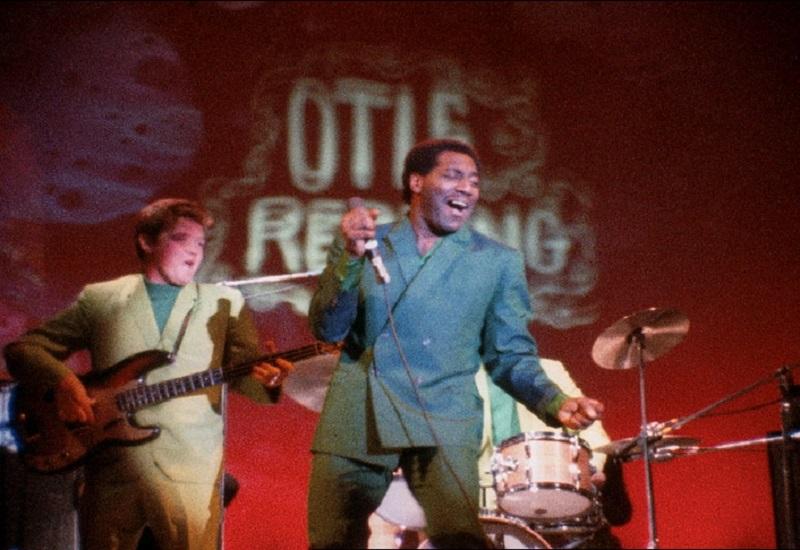
DMM: The Jefferson Airplane – Jorma and Jack, Grace, she was already a queen of rock and roll. Because the Airplane were on at night there was the backdrop so we could do these light shows. And they were just – they were ACID TRIPS. There were colors and shapes that would be like amebas and grow and get smaller and change color and move. It gave a whole another dimension. You are listening to the music, you are listening to the lyrics, you are looking at what the people are wearing on stage, and then the backdrop is pulling you in as a participant to the stage performance because you are part of this ameba color organism that everyone is part of at that moment.
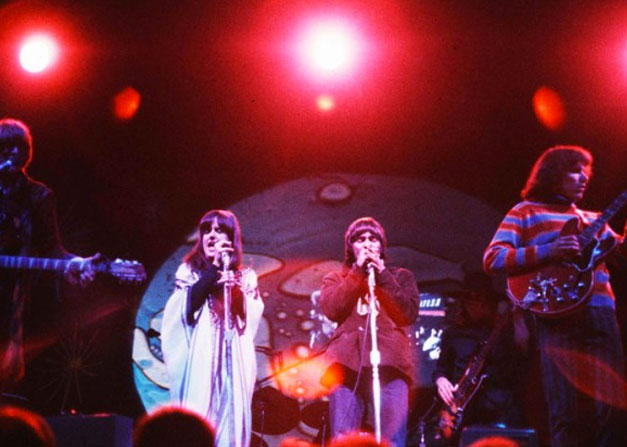
JK: I never went back to the hotel that whole weekend. Saturday night the show ended about 1. People started streaming out of the venue either to go back to their tents or wherever they were living and I was without a place to go. There was no transport. There was no nothing. And I was kind of concerned about where I was going to sleep. It turned out that there was a home economics building on the festival grounds that had been taken over by the press, such as it was, the hippie press. They were all camped out in there. And I tried to get in. And they said, Well who are you affiliated with? And I said, Oh god, I showed them my high school newspaper press card. I was an associate editor on the Colonial Gazette. And they kind of looked at each other and went whatever, come on in. So suddenly I was in a warm gym of some sort. Big room. I found a blank space on the floor between two parties of hippies. Took off my jacket and used it as a pillow and laid down on the floor. These nice people took pity on my and tossed me a blanket. And so I slept on the floor. I very much remember waking up the next morning as people were getting breakfast and someone was playing KYA and it was the Jefferson Airplane playing “Somebody to Love”, which I had just seen the night before. I really felt – I have arrived! I am not a hippie, but I am hippie adjacent. This is really cool what is happening right now.
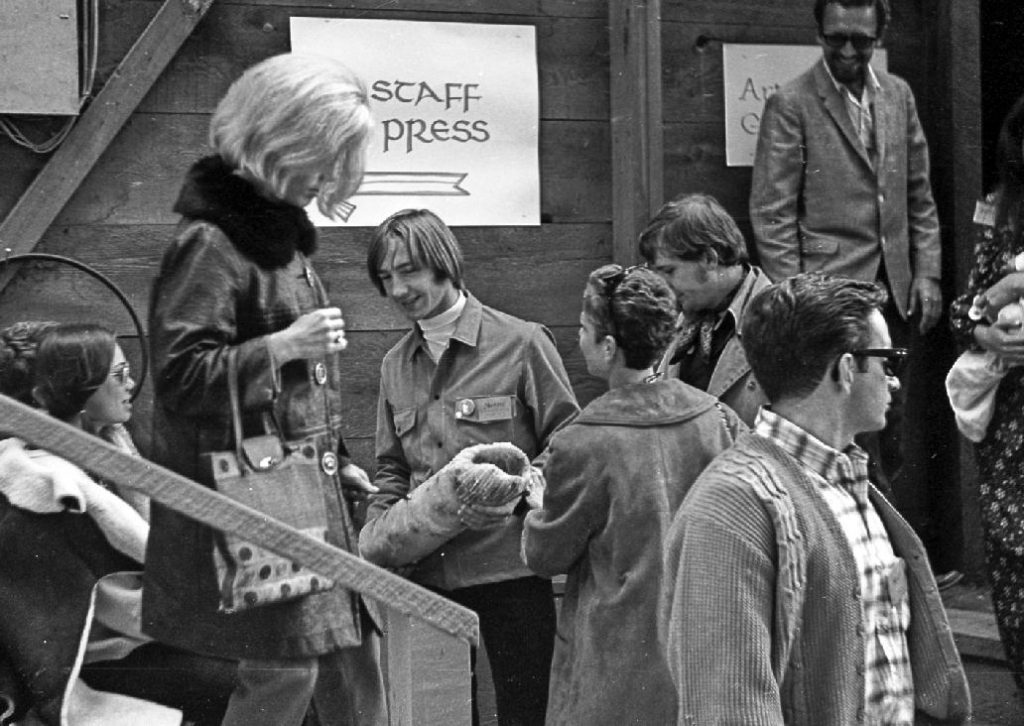
DMM: After staying there Saturday night and not sleeping really, crashing in a head shop booth, we went into something we had no idea what was going to be. Ravi Shankar, sitar music.
JK: Revolver had been out for almost a year so we all kind of new that the sitar was an instrument and he was a big avatar, but I don’t think anyone owned Ravi Shankar records at that point. After the festival, I bought every one I could find. I was absolutely hypnotized.
DMM: I’m a completist. There was no way I would go up there and miss something. I had no idea. You know, I had heard what a sitar was. But this whole new meditative approach, something that took you inside, interior, ethereal – this calm interlude in a weekend of rhythm and blues and Janis Joplin screaming her head off and taking the crowd down – the sounds coming out of that were something that we had never heard before. This was low, contemplated, meditation music. It really was an oasis in that weekend. This also was showing us the breadth of music out there that we had not been introduced to.
JK: You see that wonderful interplay between Alla Rakha and the tabla and Ravi Shankar, and you see the looks of wonder on the audiences’ face and then the standing ovation at the end. And that was really how it mounted. It just got more and more through the performance as people understood what artistry we were seeing. What incredible transmission of music in this unfamiliar genre and it reached everybody.


DMM: This was one of their biggest first appearances in the United States and they were hungry. They were hungry – they wanted to make their mark. And it was an amazing show. Unfortunately, they were upstaged as we all know. This unknown Black American with an afro walked out on stage.
RH: I do remember before going to the festival an older guy, one of the hippies, said – Oh my god! You gotta catch this one act, you gotta catch Jimi Hendrix. I said – Okay, Jim Hendrix, I’m remember. And he said – No, no, no. Jimi. And it’s Jimi with an ‘I’, J-I-M-I, you have to catch him. And it’s Hendrix with an “X”. Promise me you will see him. And that’s probably the reason I made sure that we found a way in that night.
JK: Ecstatic and electric and overwhelmingly loud and sexual and revolutionary – from the time he walked out on stage.
DMM: Incredibly flashy dresser. He is playing a guitar with a vest behind his back. So he’s got layer upon layer upon layer of clothes and then he’s doing acrobats on stage.
JK: You just sat there with your jaw open the whole time. Girls went crazy all around the stadium and the guys were just looking at it, a lot of guitar wannabe players going – Eh, maybe I will go into carpentry, auto mechanics is appealing!

DMM: This was like the Janis moment. Everyone in the crowd was just dumbfounded. This was his first appearance in the United States and he’d taken England and Europe by storm. No on in the States knew him. He came up with things that no one had ever thought of doing on a guitar. And once he did it everyone just stood in awe and said – You can do that?!? And so then Jimi realized that Pete being Pete destroys his guitar. Jimi made sure that there was no question whether or not he destroyed his guitar. He burned his guitar! It’s toward the end of his set. He’s blowing the audience away, but they are still kind of polite…not quiet, but not rushing the stage.
JK: He’s playing Wild Thing and it was cacophonous and he is pounding through the power chords and then there is a period of feedback. But then he put his guitar down on the stage. And we thought – That’s odd.
DMM: And everyone is watching him.
JK: He had something in his hand. It looked like he was pissing on the guitar, but it wasn’t – it was a bottle of lighter fluid.
DMM: And he starts spraying the lighter fluid across…
JK: Then he struck a match and it went up in flames. Lying there on stage there is a burning guitar with howling feedback. He sort of prayed to it a little bit, you could see his fingers wiggling over the fire. My reaction was – Well, that’s a topper! I wonder how Pete feels about that.
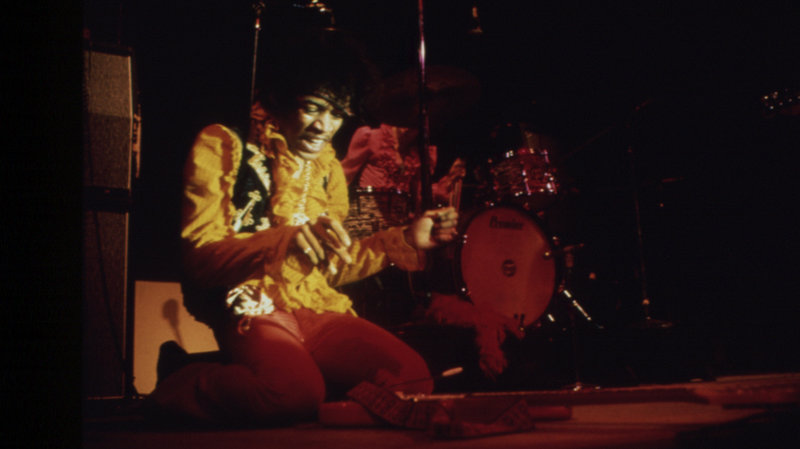
DMM: Everyone in the crowd is just – WHAT, HUH??? And then it’s just silence with them going – Oh, my god! Blew The Who off the stage. Put him at the forefront of the people who were well known, but beyond that it was just…I gave you everything. And here is the last little drop and here it is. And then the Mamas & Papas came on. I don’t know how they had the guts to even walk on to that stage. They closed it off with kind of…well, you know, you just saw the most amazing thing in the world and we can’t really reference it so we are going to do a couple of hits and close this out and then you can all trip for the rest of the night because we can’t compete.
RH: After Jimi’s performance, I scurried backwards down off the back of the arena and got the heck out of there. It was just too frightening and intense and that place could have gone up like a cinder, I’ll tell you. It was the perfect kind of music to just chill out to.
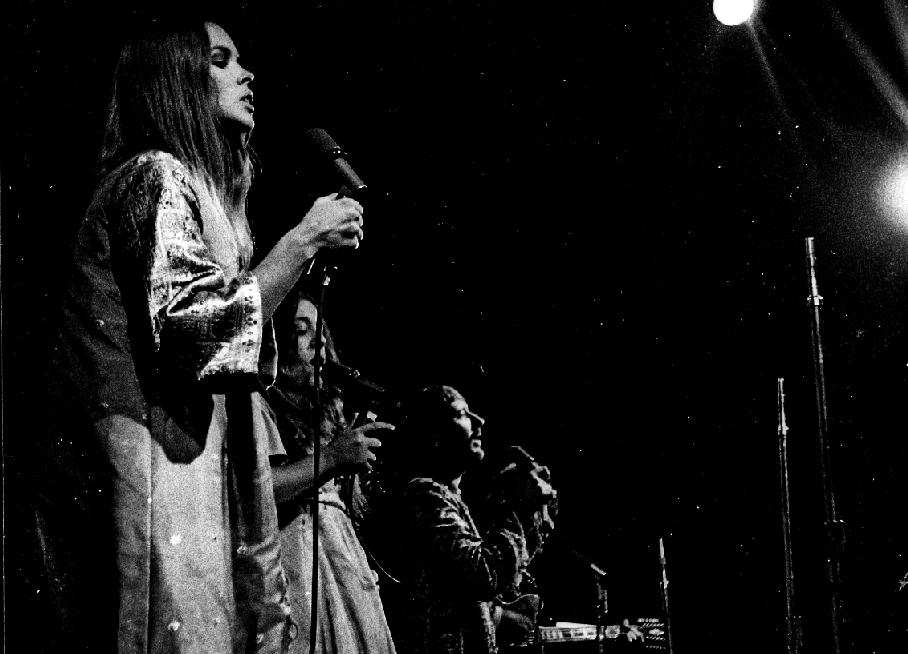
DMM: Kind of like the way Greensleeves is played at the end of Fillmore shows. Y’all know it’s over. We are giving you something really mellow and nice to walk out to that you can hum with. And then you go do whatever you are going to do. And that night was a party! Thousands of people, there was the Midway, there were parties in some of the other out buildings. People camping out from a commune in Santa Cruz, there were all kinds of side parties going on. We pretty much didn’t get any sleep that night. There was no sleeping in the booth, it was just party to party to party to music to whatever. And then the sun came up, it was about 9 o’clock in the morning and we decided we needed to get back to the hotel, which was pretty much within walking distance. So we all walked back to the hotel and my parents asked how it was. And we said – Wonderful, lovely. And they checked out of the hotel, we took showers, and got back in the car and drove back to San Diego.
RH: I had to scurry home. I was already very, very late and in fact, in those days there was a firm curfew of 10pm for anybody under 16. So I had already broken curfew.
JK: Memory of Monterey for me is inextricably intertwined with my own personal story. I can’t imagine that was true for everyone. For a lot of people it was probably a fun weekend in the middle of a fun summer. For me it came at a point in my life where I was just starting to develop. It took everything that I spent my time thinking about, which was rock and roll, and set it in front of me as a banquet. I got to have adventures, leave home, and it opened up really a whole new life for me of getting out and experiencing stuff which had just not been a part of my life. I was a shy, bashful kid. Sat at home with his radio a lot. Anyone can pontificate about how if effected the culture and musical industry and all of that, for me it was the absolute lynchpin of a new era in my life and I will always remember it that way.
DMM: So that was Monterey!
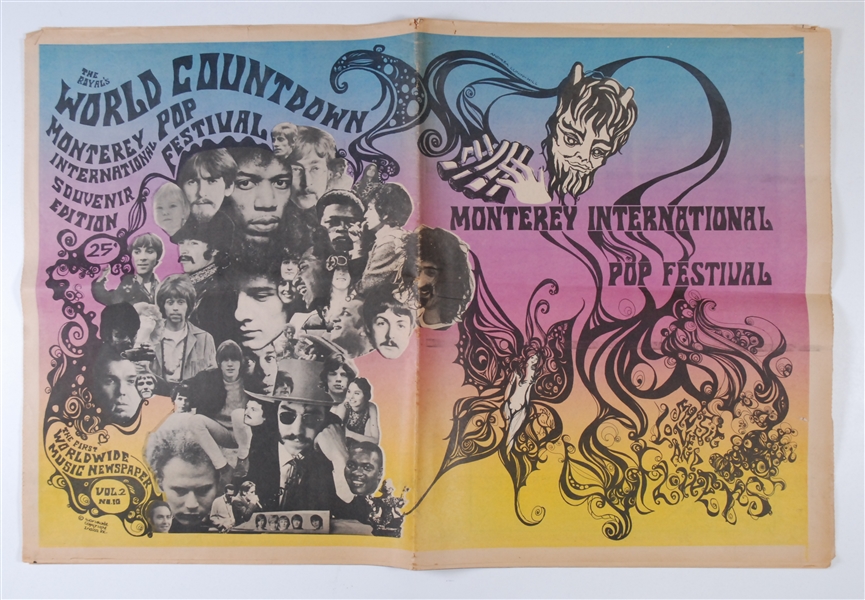
HOST: And now for a bit more history behind-the-scenes of the festival, we go back to Joel Selvin, San Francisco-based music critic and author of Monterey Pop Festival.
JS: Monterey Pop Festival was dreamed up by a guy named Alan Pariser who was one of the connoisseur pot dealers in Hollywood. He was the heir to the Sweetheart straw fortune. He was well-known to the hip rock community for his high grade cannabis. He dreamed it up and went to a guy named Ben Shapiro, who was an old-time Hollywood music business manager. Had a few clients like Ravi Shankar. And they booked the dates for the festival which was on the site of Monterey County Fairgrounds where the Monterey Jazz Festival was held every year since 1958. They went to John Phillips of the Mamas & Papas who were the top rock group in Los Angeles at the time to see if he wanted to go. And he liked the idea so much that he and his manager Lou Adler kind of hijacked it from Pariser and Shapiro. And when they took it over they turned it into this non-profit. Created a board of governors that included members of The Beatles and the Beach Boys and Simon & Garfunkel and created a whole sense of Monterey as being this impending event. In order for Monterey to represent the new rock scene in June of 1967 fully and completely, not only did they need the support of the London rock scene which they were getting through their contacts with The Stones and The Beatles and others, but they had to have the San Francisco rock bands. Now at that point most of the San Francisco bands had not really played outside of San Francisco. The Airplane, their second album had come out in February of 1967 and immediately White Rabbit was a hit record. In June of ’67, as the Pop Festival was starting to take place, the second single, Somebody to Love, just exploded. They were the most anticipated act of the weekend. But that was just tip of the iceberg and everybody knew that. There was this Fillmore and Avalon scene that was just in San Francisco. The was the only place you could see or hear it, but you’d heard about it. So Lou Adler and Phillips came up to San Francisco because they knew they needed the cooperation. And San Franciscans were hippies and they were very suspicious of the Los Angeles music business. They went to Ralph Gleason who was the respected columnist in the San Francisco Chronicle. Gleason started listening to them and said, you know this is a pretty good idea, you aught to do it. And with Gleason’s blessing, they were able to go to the other rock bands managers around San Francisco and acquire pretty much the full participation of the San Francisco scene. Coming out of Los Angeles, and of course the Mamas & Papas, they brought along Scott MacKenzie, Phillips old friend he had fashioned this song that was going to be a kind of commercial for the Monterey Pop Festival.
Recent Comments